People for Bikes is currently rolling out a national ad campaign called ‘Travel With Care‘. According to their site, “The campaign’s message is built around bettering behavior by both people in cars and on bikes by asking them to travel with care and to ‘melt icy relations on the road.'”
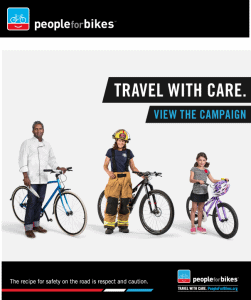
This isn’t the first ad campaign designed to encourage drivers and cyclists to see each other as partners in safety. To get a broader perspective, we took a look at similar road safety campaigns and collected some of their best thoughts.
On the topic of sharing responsibility for creating a safe environment, Massachusetts’ ‘Same Roads, Same Rules’ campaign puts it well:
- It’s about people just trying to get where they’re going safely.
- It’s about respecting each others right to be on the road.
- It’s about keeping each other safe by following a common set of rules that we all know.
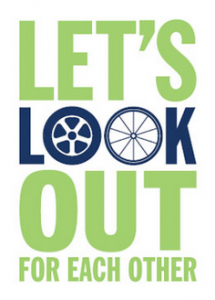 The UK’s ‘Let’s Look Out for Each Other’ campaign‘ adds to that:
The UK’s ‘Let’s Look Out for Each Other’ campaign‘ adds to that:
- Look out for each other, especially when turning
- Signal intentions so that the other road user can react
- Give cyclists space and remember that cyclists are advised to ride well clear of the [curb] to be visible and avoid collisions
The commonality among the campaigns is the notion that the divide between ‘cyclists’ and ‘motorists’ is an imaginary one. All road users are people just trying to get from one place to another. We’ve got the same errands to run, same places to go and the same daily worries – the only difference is in our choice of transportation on a given day. Since the vast majority of people who ride bicycles also regularly drive a motor vehicle, today’s cyclist could literally be tomorrow’s motorist!
However, recognizing the humanity of a fellow road user is only half the battle. How do you preserve the sense that we’re all in this together while battling with traffic? To answer that, we turn to London’s ‘Share the Road’ campaign:
“We all compete for space and as our population grows, the roads get busier and there’s less space to be had. All road users – motorists, cyclists, pedestrians and motorcyclists – are affected by the issues we face today: the pace of traffic and the pace of life. Sometimes it gets to us all and we lose our cool. But what if we let it go? And leave it behind? [We’re] asking all road users to think about their attitudes on the road. If we were all a bit more considerate, rather than competing and losing our temper, then we’d all have better, safer and less stressful journeys.”
Acknowledging our tendency to get frustrated on the road and dealing with it by choosing to act calmly instead of reacting hastily is a giant step toward making the road a safer place. And don’t forget about the human element – giving a smile or a wave (even a ‘sorry, my bad’ wave) makes the road a better place for everyone.
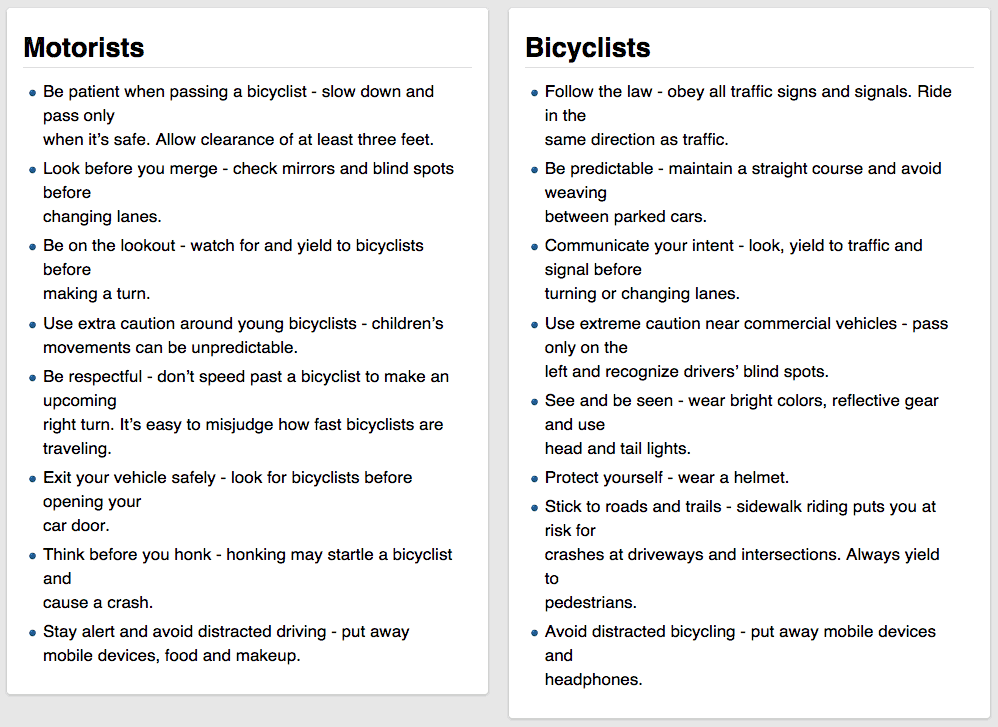


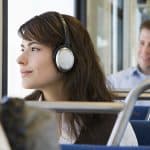
 Pedestrian Crossing Signals (AB 390): For crosswalk signals which include a countdown timer, it is now legal for a pedestrian to enter the crosswalk after the countdown has started, as long as they can make it across by the time the counter reaches zero. It is still illegal to begin crossing at a traditional pedestrian signal (i.e. no countdown timer) after it has begun flashing.
Pedestrian Crossing Signals (AB 390): For crosswalk signals which include a countdown timer, it is now legal for a pedestrian to enter the crosswalk after the countdown has started, as long as they can make it across by the time the counter reaches zero. It is still illegal to begin crossing at a traditional pedestrian signal (i.e. no countdown timer) after it has begun flashing.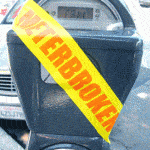 No Parking Citations at Broken Meters (AB 1625): You cannot be restricted from or ticketed for parking at a broken meter. However, you must still observe the posted time limit for parking.
No Parking Citations at Broken Meters (AB 1625): You cannot be restricted from or ticketed for parking at a broken meter. However, you must still observe the posted time limit for parking.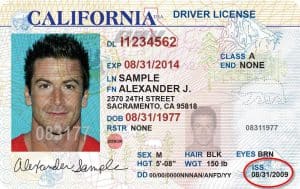 Driver License Eligibility – Undocumented Residents (
Driver License Eligibility – Undocumented Residents (



